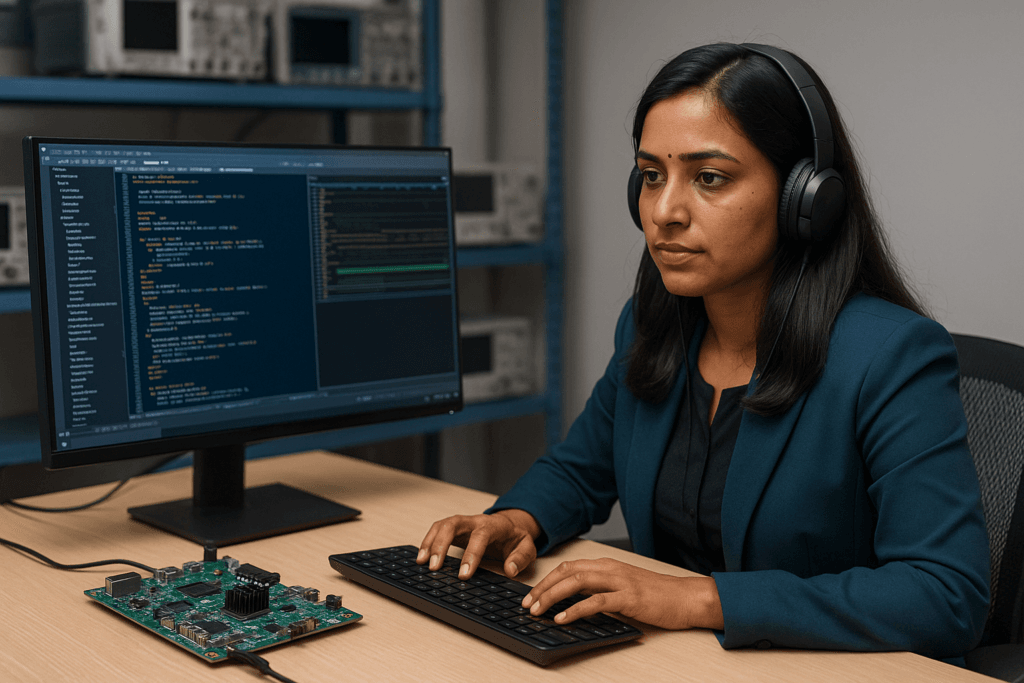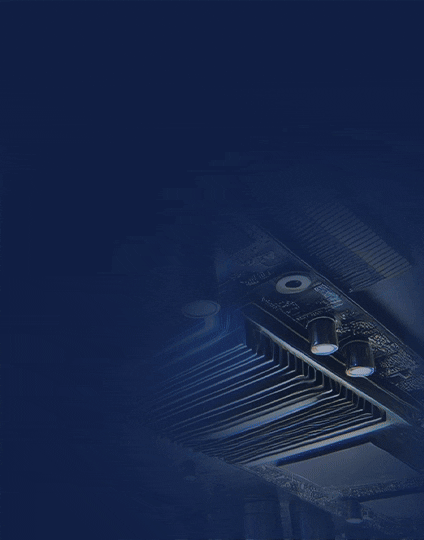FPGA Insights interviewed S.Shalini, working with Capgemini as a senior Design Verification Engineer to explore her expertise and gain valuable insights into FPGA design.

What’s your Name, job title & area of research/work?
I’m S.Shalini, currently working as a Design Verification Engineer.
My main focus is on FPGA-based system design and validation, especially for high-speed and mission-critical applications.
Can you provide an overview of your experience with FPGA design projects mentioning a few that you’ve worked on, starting with a brief introduction?
I’ve been working in FPGA design and verification for a few years now. I’ve mostly worked on projects involving PCIe-based data acquisition systems, image processing on Xilinx Zynq SoCs, and verification of DDR controller IPs.
My role typically includes RTL coding in Verilog, protocol-level design, and functional verification using UVM. I’ve used tools like Vivado, Quartus, and ModelSim throughout these projects.
Can you explain the benefits of using FPGAs over other types of processors?
FPGAs are great when you need parallel processing, low latency, and hardware-level customization.
Unlike general-purpose processors that run sequentially, FPGAs can process multiple tasks at the same time, which makes them ideal for real-time applications like signal processing or high-speed data transfer.
They’re also reprogrammable, so you can tweak the design as needed without changing the hardware. Plus, for specific workloads, they’re much more power-efficient than CPUs or GPUs.
What are the most significant trends observed in the FPGA industry over the past year? How will these trends shape the industry’s future?
Over the past year, I’ve seen a big shift in how FPGAs are being used especially for AI acceleration, 5G, and automotive systems.
There’s a lot more focus on edge AI, where FPGAs are used for real-time processing in low-power environments.
Tools are also getting better high-level synthesis and open-source platforms are making FPGA design more accessible.
Going forward, I think we’ll see FPGAs used even more in smart devices, telecom, and autonomous tech.
The flexibility they offer is a huge advantage as systems keep evolving.
How do you see FPGA development evolving to meet the demands of modern applications and complex workloads?
FPGA development is definitely evolving. We’re moving towards more integrated platforms like SoCs that combine CPUs and FPGA fabric which makes development smoother and more powerful.
Also, tools are improving a lot. High-Level Synthesis (HLS) and AI-assisted design are making it easier to handle complex logic without writing low-level code.
I think as workloads get heavier especially with AI, 5G, and real-time data processing FPGAs will keep adapting by becoming faster, more power-efficient, and more developer-friendly.
Key drivers behind the increasing adoption of FPGAs in various applications and industries?
The main drivers are flexibility, parallel processing, and low latency. FPGAs let you customize hardware for specific tasks, which is a huge plus in industries like telecom, automotive, and AI. They’re also great for real-time processing, which makes them ideal for things like 5G base stations, autonomous vehicles, and industrial automation.
Another big reason is their re-programmability, you can update or tweak the logic without changing the hardware, which saves time and cost as systems evolve.
Sectors that stand to benefit the most from FPGA integration, and why?
I’d say telecom, automotive, aerospace, and AI at the edge are really benefiting from FPGA integration.
In telecom, they’re perfect for handling the speed and data load of 5G. In cars, especially with ADAS and self-driving tech, FPGAs help process sensor data in real time.
Aerospace relies on them for their reliability and ability to handle harsh conditions. And with AI, especially on edge devices, FPGAs offer great performance without eating up power.
Basically, anywhere you need fast, flexible, and reliable processing. FPGAs fit right in.
The role of FPGAs in accelerating AI applications and advancements expected in the near future.
FPGAs play a big role in AI, especially for real-time inference at the edge. They’re super useful when you need low latency and power efficiency like in cameras, robots, or smart sensors.
What’s exciting is that tools are getting better at making AI models run on FPGAs without deep hardware knowledge. In the near future, I think we’ll see more compact, FPGA-powered AI solutions in things like drones, wearables, and even home devices.
The combo of speed, flexibility, and low power makes FPGAs perfect for next-gen AI.
Ensuring the security and integrity of FPGA designs, especially in sensitive applications like finance and defense.
Security is a huge focus, especially in areas like defense and finance. With FPGAs, you can build in custom security features right into the hardware like encryption, secure boot, and tamper detection which makes them harder to hack than general-purpose processors.
Also, using bitstream encryption and access controls helps protect IP and prevent unauthorized changes.
In critical systems, we often go through strict validation and use trusted toolchains to make sure everything is secure from design to deployment.
Advice for students and professionals interested in pursuing a career in FPGA development to stay updated with the latest trends and technologies.
Start with strong basics in digital design and HDL (like Verilog or VHDL). Then get hands on try personal projects, join FPGA contests, or explore platforms like Xilinx or Intel boards.
Also, keep learning! Follow industry blogs, take online courses (Coursera, edX), and stay active on forums like Reddit, GitHub, or Stack Overflow. FPGAs are evolving fast, so staying curious and building real-world stuff is the best way to grow.












